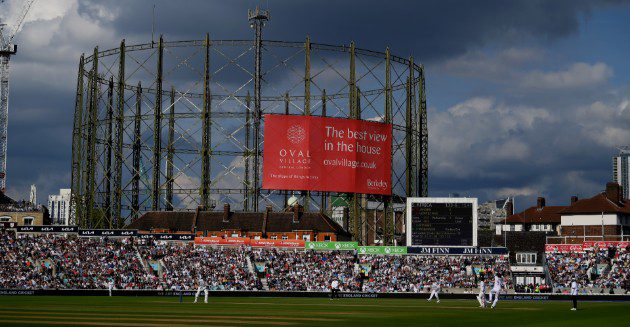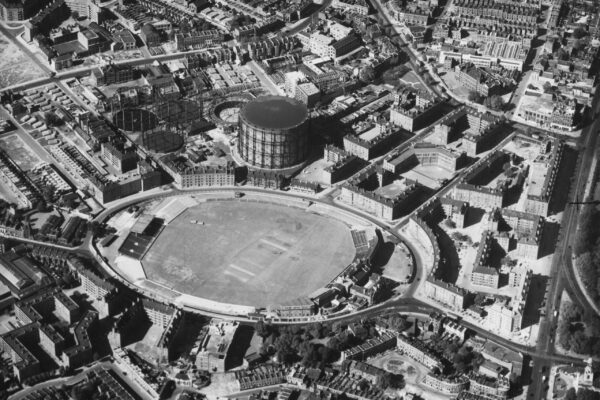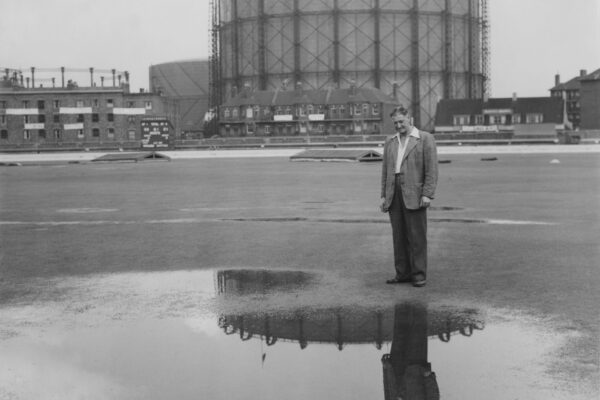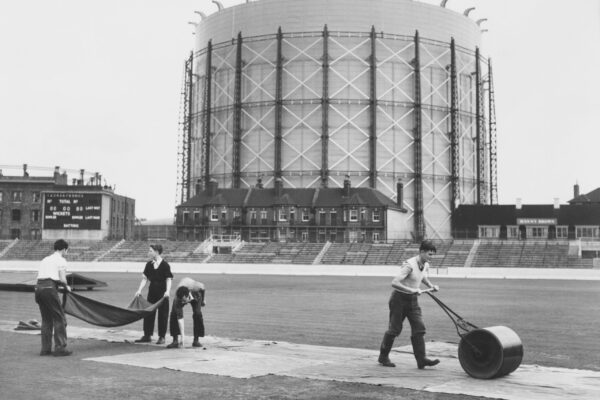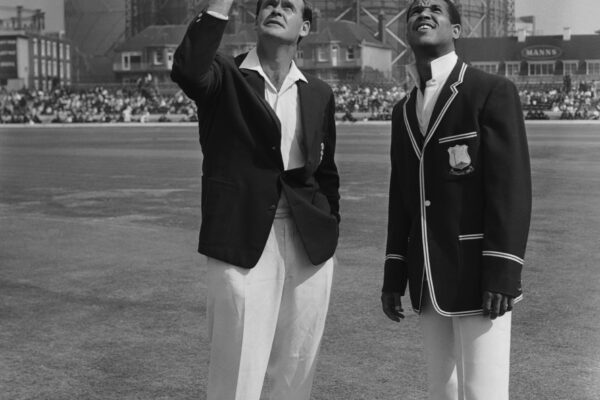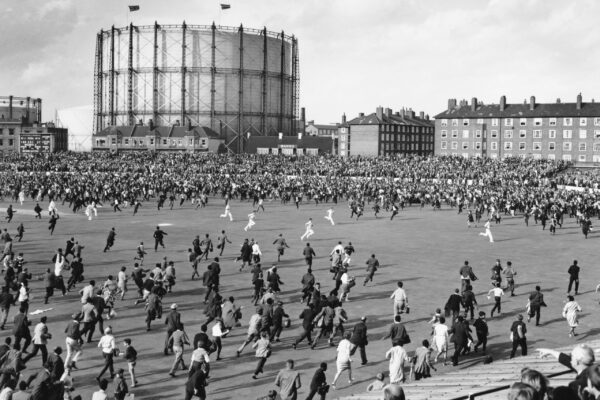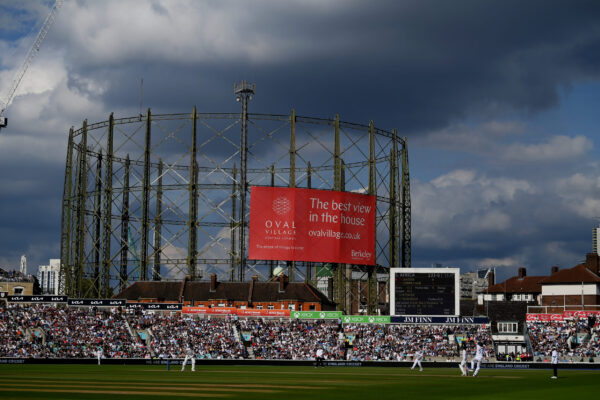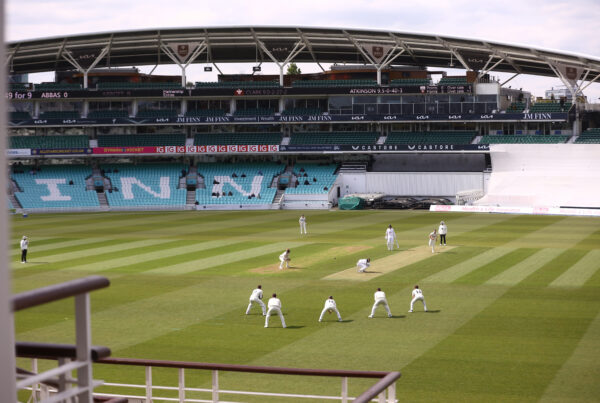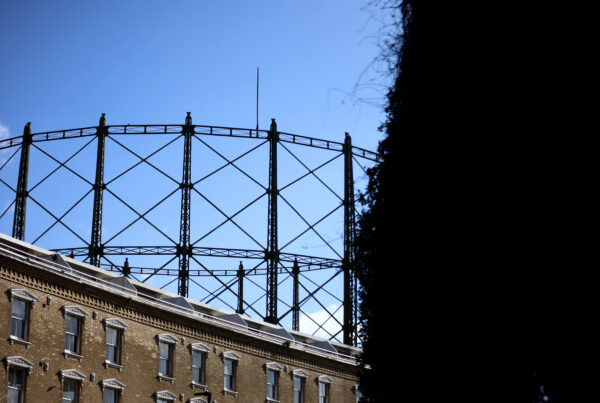The ongoing Ashes Test at The Kia Oval is the final opportunity to see the iconic gasholder in its current form. The giant structure, which overlooks the ground, will be forever linked to the history of The Oval. Richard Spiller explains
Love it, hate it or wholly indifferent to it – the gasholder cannot be ignored and has overlooked The Kia Oval for much of the ground’s life.
Newlands in Cape Town might have Table Mountain watching over it and the Basin Reserve in Wellington may be the world’s leading sporting roundabout but Kennington’s landmark has its own urban beauty, if you like that sort of thing. It is of the ground without being in the ground.
When The Oval was converted from a market garden into a cricket ground in 1845, its neighbour was a waterworks, with engine house and two circular brick-lined reservoirs. That same year, the Phoenix Gas Light & Coke Company purchased it from the Southwark & Vauxhall Waterworks Company and set about erecting five gasholders between 1847 and 1874. The big daddy, looming over everything else at 135 feet high and known as Gasholder Number One, is the only one to survive although decommissioning was completed in 2014 and it has sat there ever since waiting to hear its fate ever, having been listed as one of the last of its kind in the country.
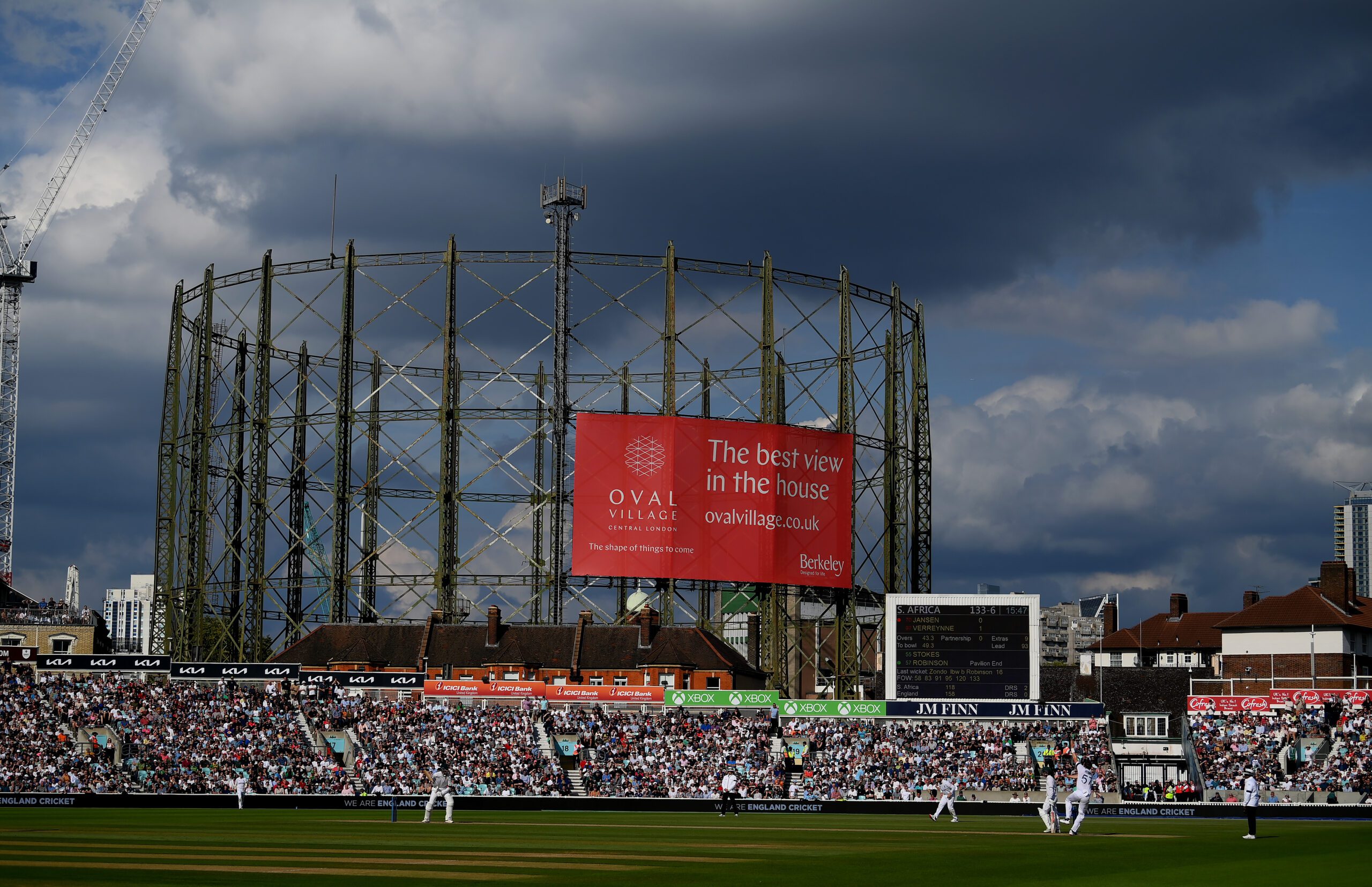
The enormous Oval Village redevelopment undertaken by Berkeley Homes will see a new use for the site – an apartment block – and will see the lattice frame forever transformed.
So, it is appropriate that the final England versus Australia contest should be the last Test to be played under the shadow of the gasholder in its original form. If it had eyes then it would have seen the first meeting of the two sides in this country – in 1880 – and the dramatic victory seven-run victory by Billy Murdoch’s men two years later which spawned the legend of the Ashes.
It has been in the background amid occasions of national rejoicing in 1926, 1953 and 2005 when the urn has been recaptured by England after long periods of Australian, witnessing the departures of such giants as Jack Hobbs in 1930 and Don Bradman in 1948 plus thousands of lesser mortals. Surrey’s great eras in the 1890s, 1950s and turn of the current century have all been within its gaze. When in use, sometimes the holder within the frame would be at maximum height, at others relatively low but all the time there to store sufficient gas to heat the homes and boil the kettles of south London and beyond.

In past decades it would be spruced up when big matches were taking place, with appropriate national flags flying from the masts and all sorts of advertising slogans ready to be captured by television cameras. One Surrey secretary used to get awfully upset when his requests for donations were turned down.
The gasholder was part of the scenery for the maiden England v Scotland football international in 1870 and inaugural FA Cup final two years later, thanks to the enterprise of Charles Alcock, who also ensured the first rugby internationals were played on the ground, along with a number of other sports.
It was there as The Oval was being used to cite searchlights during the Second World War and then converted into a prisoner-of-war camp – not that the scheduled guests ever arrived – and then miraculously transformed again so that cricket could restart in the spring of 1946.
That ground has changed almost beyond recognition in the past 40 years with the rebuilding of the pavilion and its precincts, the arrival of the JM Finn and Galadari stands plus the arrival of floodlights. It briefly became an obstacle to redevelopment of the ground too when, following the Buncefield oil depot explosion, health and safety authorities banned new constructions close to gasholders and the like.
Now the area around it is changing fast. Watching from the opposite side of The Oval since 1928 has been Archbishop Tenison’s School, which closed for good earlier in July and will eventually take on a new guise.
Cranes and the sound of building work is nothing new to The Oval, inside and out. What was once a gasholder will take on a smarter and more practical use for the new age.
The previously inaccessible brownfield site is being transformed by Berkeley as part of their Oval Village development, as part of Lambeth Council’s ambitions for the wider regeneration of Vauxhall, Nine Elms, Battersea.
About Berkeley Group
- Berkeley Group builds homes and neighbourhoods in London, Birmingham and across the South of England.
- Berkeley describe themselves as ‘holistic placemakers, focusing on large-scale brownfield regeneration’ and say they ‘work in partnership with local people and councils to create places where communities thrive and where people of all ages and backgrounds can enjoy a great quality of life.’
- Berkeley Group is made up of six companies: Berkeley, St Edward, St George, St James, St Joseph and St William.
- Through the Berkeley Foundation they fund impactful charitable programmes and partnerships, ‘which make a profound difference to thousands of disadvantaged people every year’.
- Find out more at Oval Village | New Homes in London | Oval | Berkeley Group
